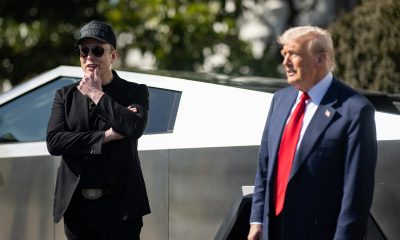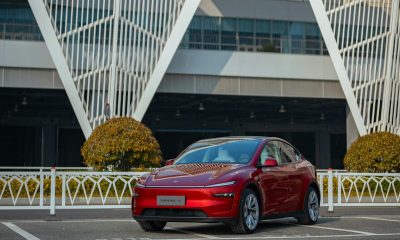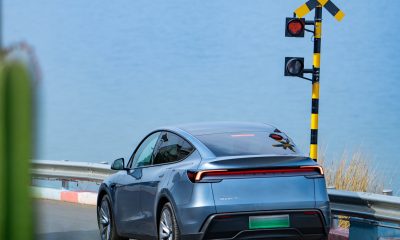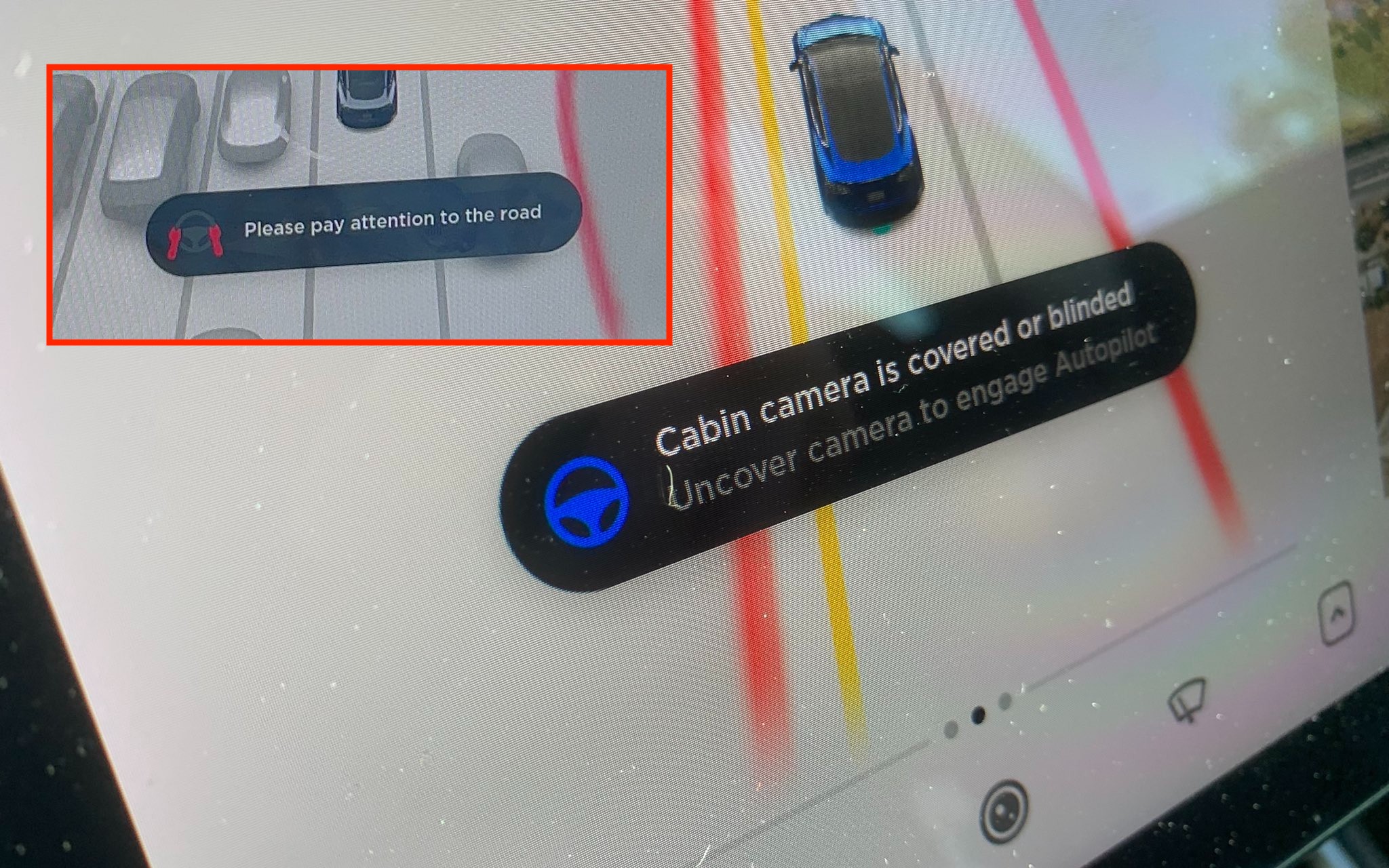

News
Tesla’s camera-based driver monitoring system exists; pretending it doesn’t makes roads less safe
Tesla’s FSD Beta program has begun its expansion to more users. And while the system is only being distributed today to drivers with a perfect Safety Score, the advanced driver-assist system is expected to be released to users with a rating of 99 and below in the near future. True to form, with the expansion of FSD Beta also came the predictable wave of complaints and pearl-clutching from critics, some of whom still refuse to acknowledge that Tesla is now utilizing its vehicles’ in-cabin camera to bolster its driver-monitoring systems.
Just recently, the NHTSA sent a letter to Tesla asking for an explanation why the company rolled out some improvements to Autopilot without issuing a safety recall. According to the NHTSA, Tesla should have filed for a recall notice if the company found a “safety defect” on its vehicles. What was missed by the NHTSA was that the Autopilot update, which enabled the company’s vehicles to slow down and alert their drivers when an emergency vehicle is detected, was done as a proactive measure, not as a response to a defect.
Consumer Reports Weighs In
Weighing in on the issue, Consumer Reports argued that ultimately, over-the-air software updates do not really address the main weakness of Teslas, which is driver-monitoring. The magazine admitted that Tesla’s driver-assist system’s object detection and response is better than comparable systems, but Kelly Funkhouser, head of connected and automated vehicle testing for Consumer Reports, argued that it is this very reason why the magazine has safety concerns with Tesla’s cars.
“In our tests, Tesla continues to perform well at object detection and response compared to other vehicles. It’s actually because the driver assistance system performs so well that we are concerned about overreliance on it. The most important change Tesla needs to make is to add safeguards—such as an effective direct driver monitoring system—to ensure the driver is aware of their surroundings and able to take over in these types of scenarios,” Funkhouser said.
Jake Fisher, senior director of Consumer Reports‘ Auto Test Center, also shared his own take on the issue, particularly around some Autopilot crashes involving stationary emergency vehicles on the side of the road. “CR’s position is that crashes like these can be avoided if there is an effective driver monitoring system, and that’s the underlying problem here,” Fisher said, adding that over-the-air software updates are typically not sent to address defects.
Tesla’s camera-based DMS
Funkhouser and Fisher’s reference to direct driver monitoring systems is interesting because the exact feature has been steadily rolling out to Tesla’s vehicles over the past months. It is quite strange that Consumer Reports seems unaware about this, considering that the magazine has Teslas in its fleet. Tesla, after all, has been rolling out its camera-based driver monitoring system to its fleet since late May 2021. A rollout of the camera-based system to radar-equipped vehicles was done in the previous quarter.
Tesla’s Release Notes for its camera-based driver monitoring function describes how the function works. “The cabin camera above your rearview mirror can now detect and alert driver inattentiveness while Autopilot is engaged. Camera data does not leave the car itself, which means the system cannot save or transmit information unless data sharing is enabled,” Tesla noted in its Release Notes.
What is interesting is that Consumer Reports‘ Jake Fisher was made aware of the function when it launched last May. In a tweet, Fisher even noted that the camera-based system was not “just about preventing abuse;” it also “has the potential to save lives by preventing distraction.” This shows that Consumer Reports, or at least the head of its Auto Test Center, has been fully aware that Tesla’s in-cabin cameras are now steadily being used for driver monitoring purposes. This makes his recent comments about Tesla’s lack of driver monitoring quite strange.
Legacy or Bust?
That being said, Consumer Reports appears to have a prepared narrative once it acknowledges the existence of Tesla’s camera-based driver-monitoring system. Back in March, the magazine posted an article criticizing Tesla for its in-cabin cameras, titled “Tesla’s In-Car Cameras Raise Privacy Concerns.” In the article, the magazine noted that the EV maker could simply be using its in-cabin cameras for its own benefit. “
“We have already seen Tesla blaming the driver for not paying attention immediately after news reports of a crash while a driver is using Autopilot. Now, Tesla can use video footage to prove that a driver is distracted rather than addressing the reasons why the driver wasn’t paying attention in the first place,” Funkhouser said.
Considering that Consumer Reports seems to be critical of Tesla’s use (or non-use for that matter) of its vehicles’ in-cabin cameras, it appears that the magazine is arguing that the only effective and safe driver monitoring systems are those utilized by veteran automakers like General Motors for its Super Cruise system. However, even the advanced eye-tracking technology used by GM for Super Cruise, which Consumer Reports overtly praises, has been proven to be susceptible to driver abuse.
This was proven by Car and Driver, when the motoring publication fooled Super Cruise into operating without a driver using a pair of gag glasses with eyes painted on them. One could easily criticize Car and Driver for publicly showcasing a vulnerability in Super Cruise’s driver monitoring systems, but one has to remember that Consumer Reports also published an extensive guide on how to fool Tesla’s Autopilot into operating without a driver using a series of tricks and a defeat device.
Salivating for the first FSD Beta accident
What is quite unfortunate amidst the criticism surrounding the expansion of FSD Beta is the fact that skeptics seem to be salivating for the first accident involving the advanced driver-assist system. Fortunately, Tesla seems to be aware of this, which may be the reason why the Beta is only being released to the safest drivers in the fleet. Tesla does plan on releasing the system to drivers with lower safety scores, but it would not be a surprise if the company ends up adopting an even more cautious approach when it does so.
That being said, incidents on the road are inevitable, and one can only hope that when something does happen, it would not be too easy for an organization such as Consumer Reports to run away with a narrative that echoes falsehoods that its own executives have recognized publicly — such as the potential benefits of Tesla’s camera-based driver monitoring system. Tesla’s FSD suite and Autopilot are designed as safety features, after all, and so far, they are already making the company’s fleet of vehicles less susceptible to accidents on the road. Over time, and as more people participate in the FSD Beta program, Autopilot and Full Self-Driving would only get safer.
Tesla is not above criticism, of course. There are several aspects of the company that deserves to be called out. Service and quality control, as well as the treatment of longtime Tesla customers who purchased FSD cars with MCU1 units, are but a few of them. However, it’s difficult to defend the notion that FSD and Autopilot are making the roads less safe. Autopilot and FSD have already saved numerous lives, and they have the potential to save countless more once they are fully developed. So why block their development and rollout?
Don’t hesitate to contact us with news tips. Just send a message to tips@teslarati.com to give us a heads up.
Elon Musk
Tesla reveals it is using AI to make factories more sustainable: here’s how
Tesla is using AI in its Gigafactory Nevada factory to improve HVAC efficiency.
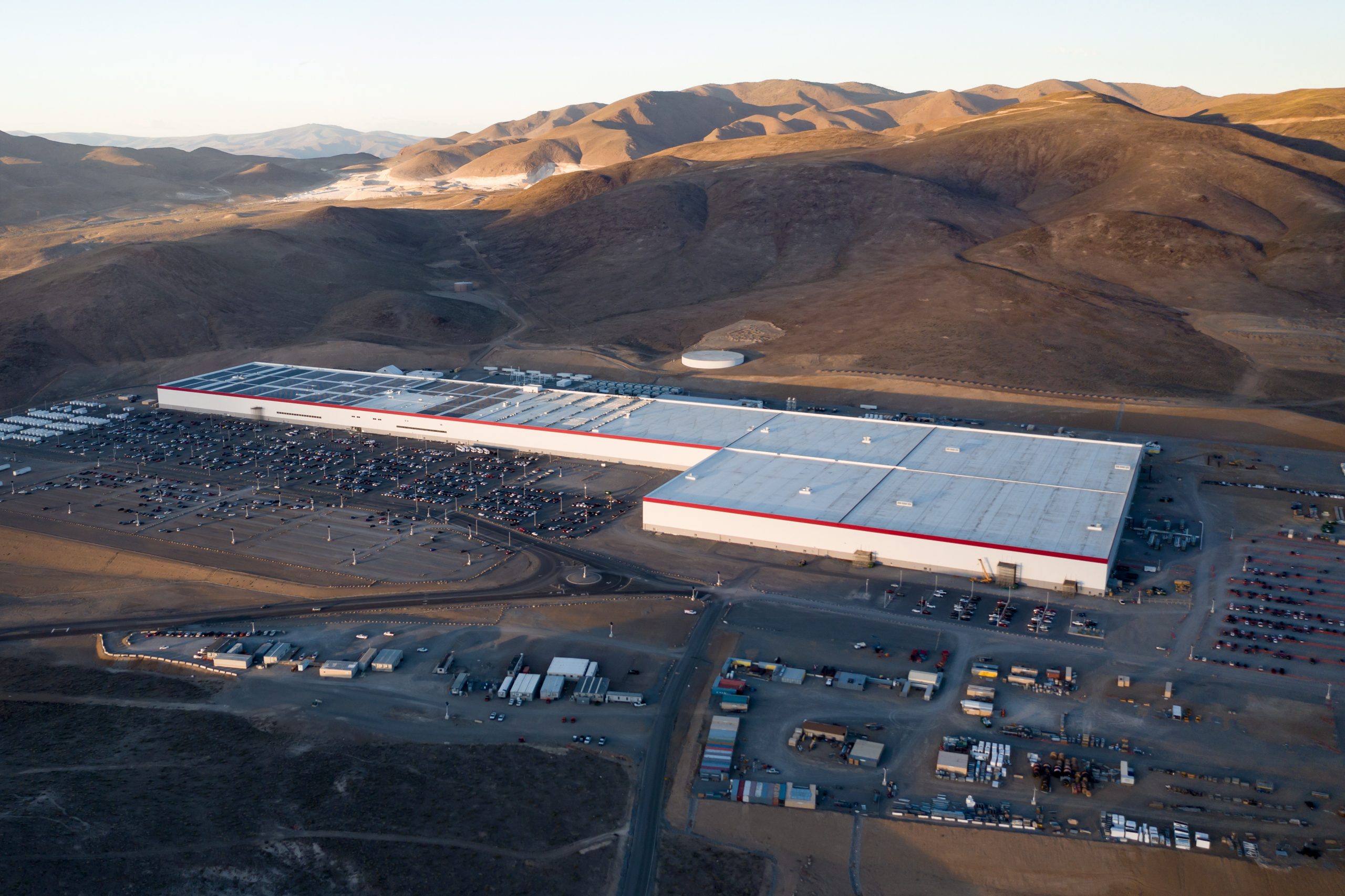
Tesla has revealed in its Extended Impact Report for 2024 that it is using Artificial Intelligence (AI) to enable its factories to be more sustainable. One example it used was its achievement of managing “the majority of the HVAC infrastructure at Gigafactory Nevada is now AI-controlled” last year.
In a commitment to becoming more efficient and making its production as eco-friendly as possible, Tesla has been working for years to find solutions to reduce energy consumption in its factories.
For example, in 2023, Tesla implemented optimization controls in the plastics and paint shops located at Gigafactory Texas, which increased the efficiency of natural gas consumption. Tesla plans to phase out natural gas use across its factories eventually, but for now, it prioritizes work to reduce emissions from that energy source specifically.
It also uses Hygrometric Control Logic for Air Handling Units at Giafactory Berlin, resulting in 17,000 MWh in energy savings each year. At Gigafactory Nevada, Tesla saves 9.5 GWh of energy through the use of N-Methylpyrrolidone refineries when extracting critical raw material.
Perhaps the most interesting way Tesla is conserving energy is through the use of AI at Gigafactory Nevada, as it describes its use of AI to reduce energy demand:
“In 2023, AI Control for HVAC was expanded from Nevada and Texas to now include our Berlin-Brandenburg and Fremont factories. AI Control policy enables HVAC systems within each factory to work together to process sensor data, model factory dynamics, and apply control actions that safely minimize the energy required to support production. In 2024, this system achieved two milestones: the majority of HVAC infrastructure at Gigafactory Nevada is now AI-controlled, reducing fan and thermal energy demand; and the AI algorithm was extended to manage entire chiller plants, creating a closed-loop control system that optimizes both chilled water consumption and the energy required for its generation, all while maintaining factory conditions.”
Tesla utilizes AI Control “primarily on systems that heat or cool critical factory production spaces and equipment.” AI Control communicates with the preexisting standard control logic of each system, and any issues can be resolved by quickly reverting back to standard control. There were none in 2024.
Tesla says that it is utilizing AI to drive impact at its factories, and it has proven to be a valuable tool in reducing energy consumption at one of its facilities.
Elon Musk
Tesla analysts believe Musk and Trump feud will pass
Tesla CEO Elon Musk and U.S. President Donald Trump’s feud shall pass, several bulls say.
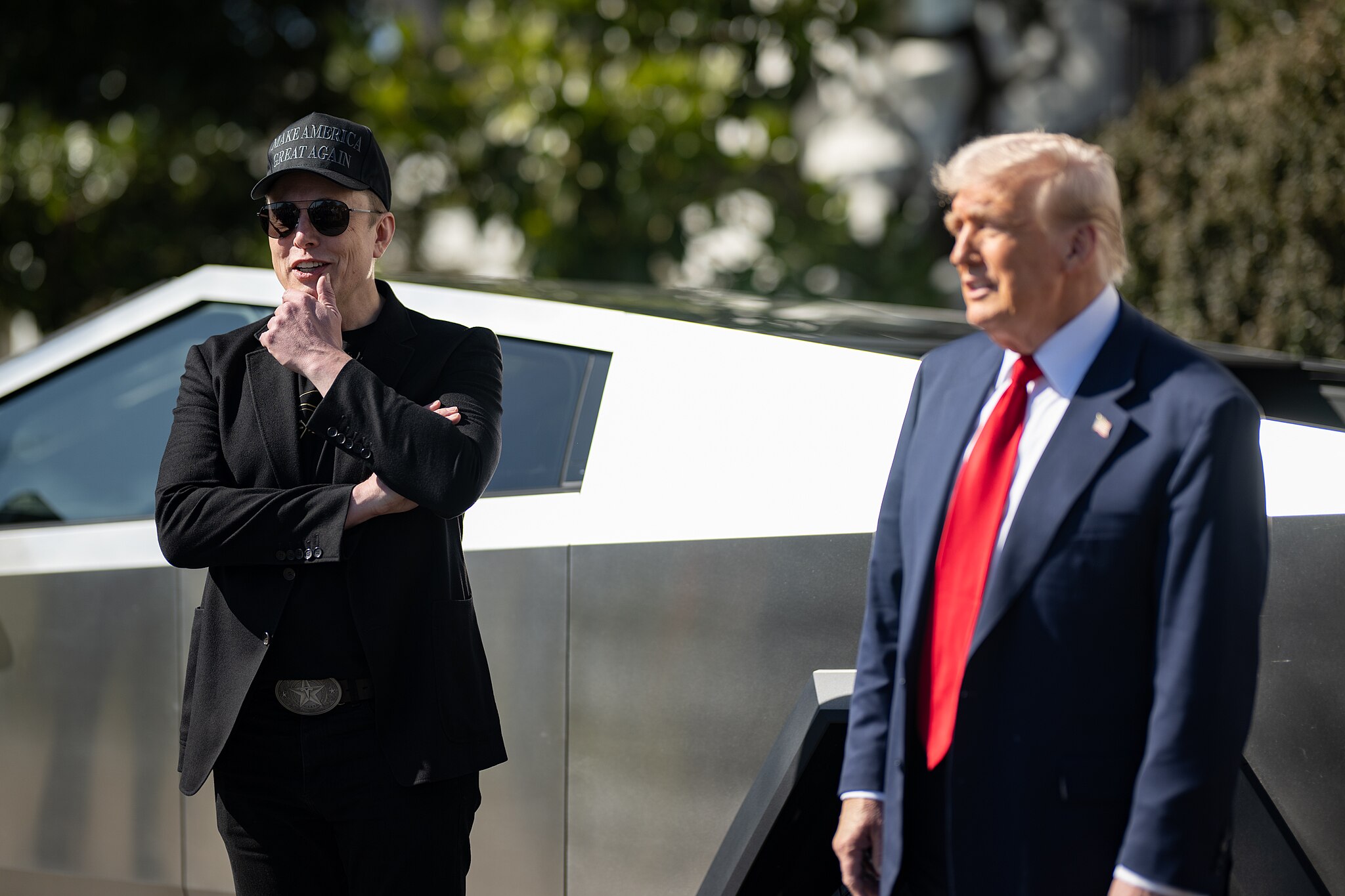
Tesla analysts are breaking down the current feud between CEO Elon Musk and U.S. President Donald Trump, as the two continue to disagree on the “Big Beautiful Bill” and its impact on the country’s national debt.
Musk, who headed the Department of Government Efficiency (DOGE) under the Trump Administration, left his post in May. Soon thereafter, he and President Trump entered a very public and verbal disagreement, where things turned sour. They reconciled to an extent, and things seemed to be in the past.
However, the second disagreement between the two started on Monday, as Musk continued to push back on the “Big Beautiful Bill” that the Trump administration is attempting to sign into law. It would, by Musk’s estimation, increase spending and reverse the work DOGE did to trim the deficit.
Every member of Congress who campaigned on reducing government spending and then immediately voted for the biggest debt increase in history should hang their head in shame!
And they will lose their primary next year if it is the last thing I do on this Earth.
— Elon Musk (@elonmusk) June 30, 2025
President Trump has hinted that DOGE could be “the monster” that “eats Elon,” threatening to end the subsidies that SpaceX and Tesla receive. Musk has not been opposed to ending government subsidies for companies, including his own, as long as they are all abolished.
How Tesla could benefit from the ‘Big Beautiful Bill’ that axes EV subsidies
Despite this contentious back-and-forth between the two, analysts are sharing their opinions now, and a few of the more bullish Tesla observers are convinced that this feud will pass, Trump and Musk will resolve their differences as they have before, and things will return to normal.
ARK Invest’s Cathie Wood said this morning that the feud between Musk and Trump is another example of “this too shall pass:”
BREAKING: CATHIE WOOD SAYS — ELON AND TRUMP FEUD “WILL PASS” 👀 $TSLA
She remains bullish ! pic.twitter.com/w5rW2gfCkx
— TheSonOfWalkley (@TheSonOfWalkley) July 1, 2025
Additionally, Wedbush’s Dan Ives, in a note to investors this morning, said that the situation “will settle:”
“We believe this situation will settle and at the end of the day Musk needs Trump and Trump needs Musk given the AI Arms Race going on between the US and China. The jabs between Musk and Trump will continue as the Budget rolls through Congress but Tesla investors want Musk to focus on driving Tesla and stop this political angle…which has turned into a life of its own in a roller coaster ride since the November elections.”
Tesla shares are down about 5 percent at 3:10 p.m. on the East Coast.
Elon Musk
Tesla scrambles after Musk sidekick exit, CEO takes over sales
Tesla CEO Elon Musk is reportedly overseeing sales in North America and Europe, Bloomberg reports.

Tesla scrambled its executives around following the exit of CEO Elon Musk’s sidekick last week, Omead Afshar. Afshar was relieved of his duties as Head of Sales for both North America and Europe.
Bloomberg is reporting that Musk is now overseeing both regions for sales, according to sources familiar with the matter. Afshar left the company last week, likely due to slow sales in both markets, ending a seven-year term with the electric automaker.
Tesla’s Omead Afshar, known as Elon Musk’s right-hand man, leaves company: reports
Afshar was promoted to the role late last year as Musk was becoming more involved in the road to the White House with President Donald Trump.
Afshar, whose LinkedIn account stated he was working within the “Office of the CEO,” was known as Musk’s right-hand man for years.
Additionally, Tom Zhu, currently the Senior Vice President of Automotive at Tesla, will oversee sales in Asia, according to the report.
It is a scramble by Tesla to get the company’s proven executives over the pain points the automaker has found halfway through the year. Sales are looking to be close to the 1.8 million vehicles the company delivered in both of the past two years.
Tesla is pivoting to pay more attention to the struggling automotive sales that it has felt over the past six months. Although it is still performing well and is the best-selling EV maker by a long way, it is struggling to find growth despite redesigning its vehicles and launching new tech and improvements within them.
The company is also looking to focus more on its deployment of autonomous tech, especially as it recently launched its Robotaxi platform in Austin just over a week ago.
However, while this is the long-term catalyst for Tesla, sales still need some work, and it appears the company’s strategy is to put its biggest guns on its biggest problems.
-

 Elon Musk1 day ago
Elon Musk1 day agoTesla investors will be shocked by Jim Cramer’s latest assessment
-

 News6 days ago
News6 days agoTesla Robotaxi’s biggest challenge seems to be this one thing
-

 News2 weeks ago
News2 weeks agoTesla’s Grok integration will be more realistic with this cool feature
-

 Elon Musk2 weeks ago
Elon Musk2 weeks agoElon Musk slams Bloomberg’s shocking xAI cash burn claims
-

 News2 weeks ago
News2 weeks agoTesla China roars back with highest vehicle registrations this Q2 so far
-

 News2 weeks ago
News2 weeks agoTexas lawmakers urge Tesla to delay Austin robotaxi launch to September
-

 News2 weeks ago
News2 weeks agoTesla dominates Cars.com’s Made in America Index with clean sweep
-

 Elon Musk1 week ago
Elon Musk1 week agoFirst Look at Tesla’s Robotaxi App: features, design, and more




